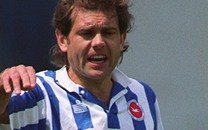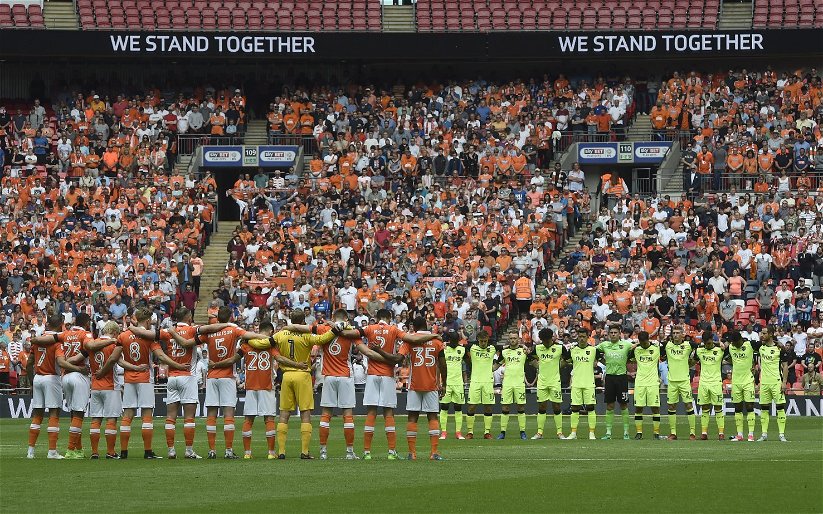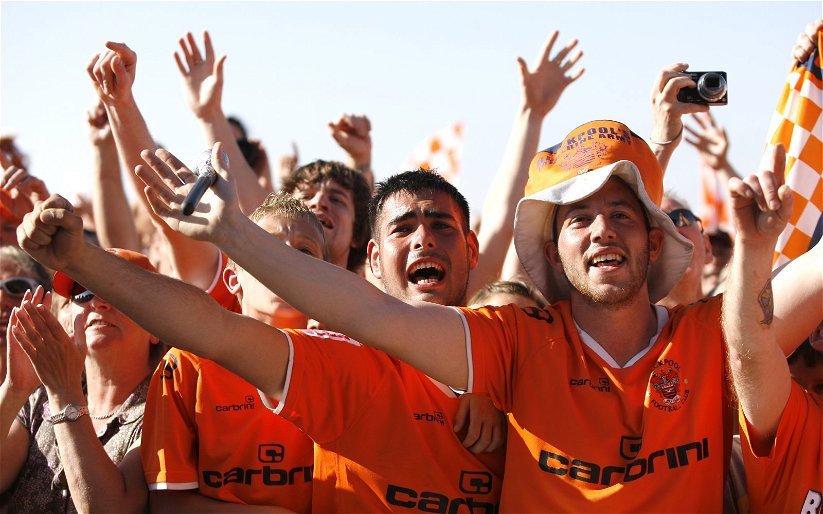Ewood Park – T’Rovers
When I were a lad a trip to t’rovers wasn’t always as pleasant an experience off the pitch as it was on it. Terraced houses, a mucky stream and ambush alleys by the dozen – ah football in the 70’s you couldn’t beat it. No-one’s really mentioned the proverbial six pointer so far this season but with just under a quarter left to go every point counts and a decent result Saturday will go a long way to easing the growing tensions coming from the position we find ourselves in.
The Ground
There was once a fairy tale that included the house that Jack built and Ewood Park is literally that.
T’Rovers have played there since they moved from Leamington Street in the summer of 1890. The stadium opened in 1882 and Jack’s house is now an all seater with a capacity of 31,367. It’s made up with the Darwen End, Riverside Stand, the Blackburn End and the Jack Walker Stand.
Ewood Park is the second oldest home to a Premier League club. Stamford Bridge was constructed earlier (1876), although Chelski didn’t start playing there until 1905.
Football had been played on the site since at least 1881; Rovers played four matches there when it was known as Ewood Bridge and was most likely little more than a field. Their first match was against Sheffield Wednesday on 9 April.
Ewood Park was opened in April 1882 and during the 1880s staged football, athletics and greyhound racing. Rovers moved back in in 1890, signing a ten year lease at an initial annual rent of £60.
Their first match at the ground was against Accrington in September. The ground became a great success and was given the honour of hosting an international – England v Scotland in 1891.
In 1893, Blackburn Rovers bought the freehold of the ground for £2500, but came close to disaster soon after when part of a stand collapsed under the weight of a 20,000 strong crowd for the visit of Everton.
In 1903, a roof was built on the Darwen End of the ground, at a cost of £1680. The stand now held 12,000 fans. A year later, in 1904, the Nuttall Street Stand was built, based on designs by the architect, Archibald Leitch. The stand was first used by supporters on New Year’s Day 1907 for a match against PKE.
A double tiered Riverside Stand was built in 1913, bringing the capacity of Ewood Park up to 70,886 with 7000 seats.
In 1928, a concrete wall was erected around the ground. Furthermore, the Blackburn End was terraced and the Riverside Stand re-roofed at a total cost of £1550.
Ewood Park saw its largest crowd – 62,522 for the visit of Bolton Wanderers in 1929.
Floodlights were installed in 1958 and were first used in a friendly against Werder Bremen. Two years later a concrete roof was erected over the Blackburn End terrace.
Prior to the most recent rebuild the Nuttall Street Stand was renewed back in 1984 after a fire in the summer months, this was two banks of executive boxes.
After concerns about wooden grandstands after the fire at Bradford City, the Riverside Stand was demolished in 1987. Chairman Bill Fox, later persuaded his friend, and fellow Rovers supporter, Jack Walker to provide the steel for a new single tiered all seater stand, opened in 1988.
After selling Walkersteel to British Steel for £330 million, Jack Walker decided to buy Blackburn Rovers and set about changing Ewood Park to one of the most advanced grounds in the country. In June 1992 the local council approved plans to develop Ewood Park into a 31,000 all-seater ground. By February 1994, the new two-tiered Blackburn and Darwen End stands were open.
The development of the new Darwen End Stand had involved the demolition of Fernhurst Mill in order to make way for the new stand and a car park.
The ground’s transformation was complete when in August 1994, the Jack Walker Stand was opened on the site of the old Nuttall Street Stand. Houses along Nuttall Street had been demolished in late 1992 to make way for the new larger stand.
5000+ travelling tangerines, we’ll add the colour and the noise.
How To Get There
From the North:
Leave the M6 at Junction 29 and join the M61, at the first exit join the M65 and head East to Blackburn.
Ewood Park is well signposted on the M65, leave at junction 4, join the A666 and head towards Blackburn. Ewood Park is about a mile away on your right.
From the South:
Exactly the same as above.
From the West:
From the M6/M62 or M60, join the M61, leave the M61 for the M65 and head East to Blackburn. Then the same as above.
From the East:
Travelling from Yorkshire, either on the B6234, the A56 Haslingden by-pass or the Skipton Road, join the M65 and head West. Guess what? The same as above
From the M62 leave at Junction 18 for the M66 Bury, travel to the end of the Motorway which becomes the A56, join the M65 at Junction 8 and head Westbound towards Blackburn. Leave the M65 at junction 4 and you know the way by now.
For the Virgin lovers amongst us – Blackburn station is approximately a mile and a half from Ewood Park. Mill Hill station is approximately one mile away from the ground. There are direct trains from Manchester Victoria, Salford Crescent and Preston.
Buses serving Ewood Park are:
No. 1 (Darwen Cemetery – Darwen – Blackburn – Accrington)
No. 5a / 5c (Blackburn Outer Circle Anticlockwise & Clockwise)
No. 19 (Sunnybower – Blackburn – Feniscowles)
No. 225 (Bolton – Blackburn – Clitheroe)
No. 237 (Edgworth – Darwen – Blackburn)
Service 1 departs from stand M at Blackburn Boulevard
Services 19 & 225 depart from stand N at Blackburn Boulevard
Service 237 departs from stand P at Blackburn Boulevard
Where To Drink
No doubt everyone will be heading towards The Fernhurst.
It is on the Bolton Road (A666) just across from the ground at the away supporters end (Darwen End).
The Golden Cup pub just up Bolton Road from the Fernhurst (going away from the ground) is on the small side but has a good mix of home and away supporters. This pub is a good 15 minute walk away from the Fernhurst going uphill. A little closer but in the same direction is the Bear Hotel which also has a large bar.
If you are arriving at Mill Hill station, then you might want to give the Navigation pub a try. It is about a five minute walk way from the station.
As you exit the station turn left and just keep straight on up the road in front of you. As you approach a bridge going over the canal, the pub can be seen just over on the right.
Ale is also served in the ground.
Plod & Stewards
Due to the numbers of Pool fans there’ll be a decent old bill presence. Stewards are reported as being relaxed and friendly – after our last outing at Wolves, Harold Shipman would be a welcoming sight ushering us towards our seats.
Fear Factor Rating – 4
31 years since we last visited. There can’t be many grounds that we haven’t taken in during that time but if ever we wanted a result then Saturday is it. We owe them from earlier in the season when we had to suffer Allardyce whooping it up in injury time and the spitter had put in a MOTM performance. Both have left East Lancs since then and our overall record against T’Rovers is good. Our away form has been a real suprise this season, here’s hoping come 5pm on Saturday that we are the ones that have left the home fans shaking their heads and trapsing home uttering cries of no nay never.
Onwards + Upwards
Share this article




The last thing you would want to do is get off the train at Mill Hill. Unless you are partial to the meeting and greeting of our less friendly Rovers fans. Mill Hill = NUTS!